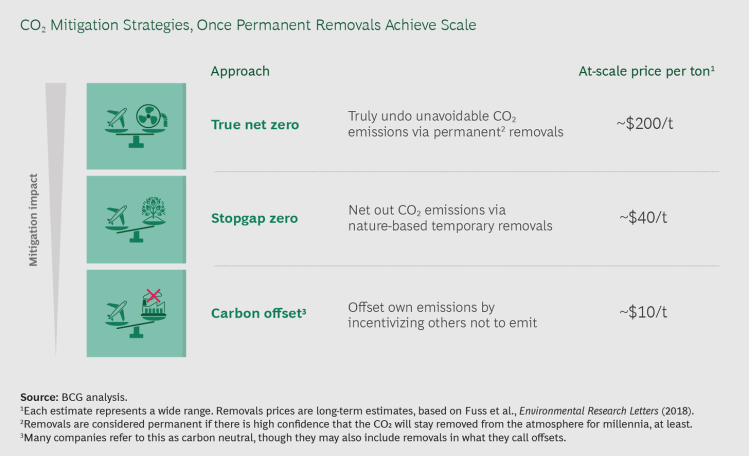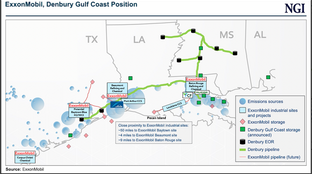
🌏 Spinning CO2 into clothes
Scaling “symbiotic manufacturing” with Rubi Laboratories
We need the market to signal demand for permanent carbon removals, to lower the price and drive technological scaling.
Finding balance in the world of climate change is often described as “net zero,” where emissions produced are offset by emissions removed from the atmosphere, buying us time to transition to a low-carbon economy. But there’s a catch – those trees we’ve relied on to store our offset carbon aren’t permanent. Indeed nature-based solutions for storing carbon are stop-gaps, not storage lockers – and to complicate the picture, permanent sequestration solutions are still nascent technologies.
We need the market to signal demand for permanent carbon removals, to lower the price and drive technological scaling. BCG has identified those companies with the right incentives and resources that might be willing to pay for “true net zero.”

The three available CO2 mitigation strategies and their costs (BCG photo)
Early adopters of true net zero would have high margins and low emissions intensity (think: tech cos, consulting firms) and also rely on premium talent and brand positioning. For these companies, it’s possible that paying for premium true net zero offsets (~$200/ ton vs $40 for basic offsets) would have a positive return (and/ or be a non-significant total sum).
This trend is already starting to play out across Silicon Valley’s largest tech companies response to the clean energy transition. In another study, BCG ranked the 48 biggest tech cos on their level of influence and participation, and found that there’s a stark divide in performance. Some companies (like Alphabet, Apple, Applied Materials, Tesla, etc.) are going above and beyond in reducing their own carbon footprint as well as policy pushes and reporting. Yet many of their supposed peers do not.
 Top Silicon Valley tech co’s ranking on influence and performance in clean energy efforts (LinkedIn photo)
Top Silicon Valley tech co’s ranking on influence and performance in clean energy efforts (LinkedIn photo)
What companies on this chart (and beyond Silicon Valley tech giants) are actually willing to pay for the talent and brand benefits of premium true net zero? And how do we mobilize those well-poised companies to action?
Approaches like this of translating “do the right thing” into dollars and cents, along with a healthy dose of sunlight and peer pressure, might just tip the first domino.
Interested in more content like this? Subscribe to our weekly newsletter on Climate Tech below!

Scaling “symbiotic manufacturing” with Rubi Laboratories

How to build trust and collaboration in CDR with Isometric, starting with the science

Exxon’s acquisition of Denbury fuels CO2 transport ambitions